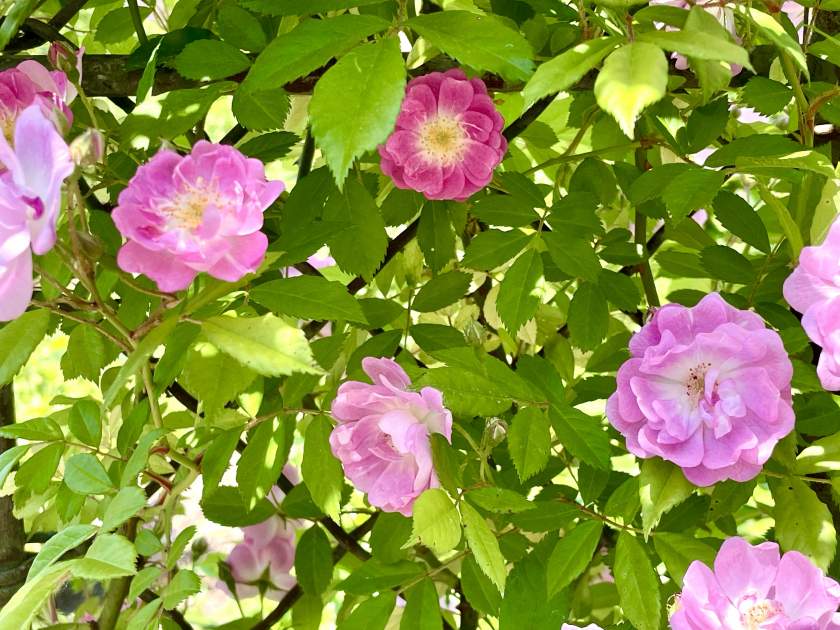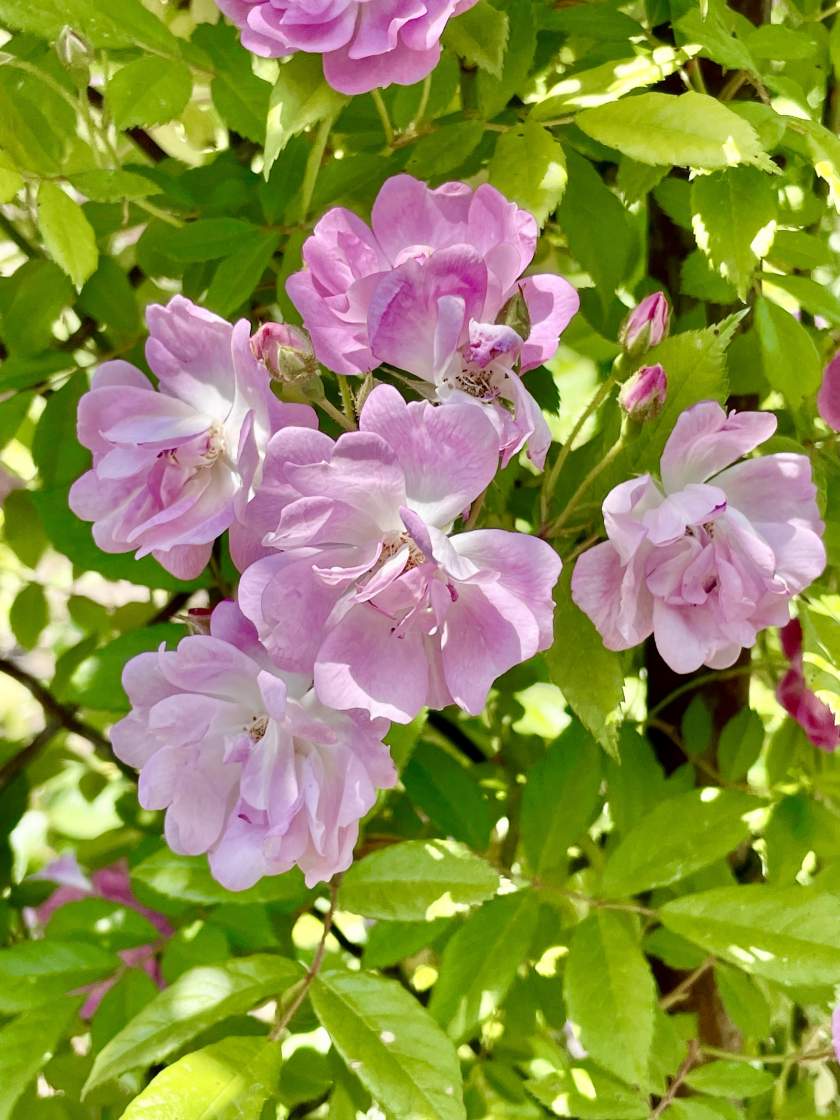Rosa ‘Dawson’: The Fragrant Rambler Rose
Rosa ‘Dawson’, also known as Rosa dawsoniana, Rosa multiflora ‘Roseiflora’, or Rosa multiflora roseiflora, is a hybrid multiflora rose that was bred by Jackson T. Dawson in the United States in 1888. It was first introduced to Australia by George Brunning of St. Kilda Nurseries in 1897 under the name ‘The Rosa ‘Dawson’Dawson Rose‘. This rambler rose has since gained popularity for its vigorous growth, attractive flowers, and strong fragrance.
Characteristics: Rosa ‘Dawson’ is a rambler rose from the Rosaceae family of plants. It can reach heights of up to 25 feet (7.6 meters). It features glossy, dark green foliage that serves as an elegant backdrop to its abundant clusters of small, semi-double pink flowers. The blooms have an average diameter of 1.5 inches (3.8 centimeters) and showcase golden-yellow stamens, adding a touch of contrast. The flowers emit a strong and delightful fragrance, enhancing the overall appeal of this rose variety.
Flowering Season: Rosa ‘Dawson’ typically blooms once during the spring or summer season, adorning gardens, fences, and trellises with its charming floral display. While it is not a repeat bloomer, its primary flowering period occurs in late spring to early summer.
Cultivation of Rosa ‘Dawson’:
Sunlight: To thrive and achieve optimal growth, Rosa ‘Dawson’ requires full sun exposure. It should be planted in an area that receives at least six hours of direct sunlight per day.
Watering: Regular and consistent watering is crucial for the well-being of Rosa ‘Dawson’, particularly during hot and dry weather conditions. It is recommended to water deeply, ensuring the moisture penetrates the root zone. While it prefers evenly moist soil, it is important to avoid overwatering and ensure the soil has adequate drainage.
Soil: Rosa ‘Dawson’ thrives in well-drained soil, which helps prevent root rot. It is adaptable to various soil types but will benefit from the addition of organic matter, such as compost, to improve soil structure and fertility. Before planting, ensure the soil drains well to create a favorable growing environment for the rose.
Pests and Diseases: Rosa ‘Dawson’ exhibits good disease resistance, although it can still be susceptible to common rose diseases such as black spots and powdery mildew, particularly in cool and damp conditions. To minimize the risk of these diseases, provide good air circulation around the plant by spacing it appropriately and avoiding overhead watering. In case of infestations or outbreaks, suitable organic or chemical controls can be applied.
Pruning: Pruning plays a vital role in maintaining the health and appearance of Rosa ‘Dawson’. In the spring, before new growth emerges, perform light pruning to enhance the plant’s overall aesthetics and blooming frequency. Remove any dead, diseased, or damaged branches, as well as any crossing or overcrowded stems. Shaping the plant or controlling its size can also be achieved through selective pruning. Use clean and sharp pruning shears to ensure clean cuts and minimize the risk of disease transmission.
Propagation:
Rosa ‘Dawson’ can be propagated through cuttings or layering.
1. Cuttings:
- Take 4-6 inches (10-15 centimeters) cuttings from healthy, disease-free growth in the spring or summer.
- Ensure the cuttings have at least 3-4 leaves and remove the lower leaves.
- Dip the cut ends in a rooting hormone to stimulate root development.
- Plant the cuttings in a well-draining potting mix and keep the soil consistently moist.
- Place the cuttings in a warm and bright location, away from direct sunlight.
- Rooting generally occurs within 4-6 weeks.
2. Layering:
- Select a healthy, low-growing branch in the spring or summer.
- Make a shallow cut in the bark of the branch, approximately 1 inch (2.5 centimeters) below a leaf node.
- Bend the branch down to the soil level and secure it in place using a U-shaped piece of wire.
- Cover the cut area with soil, ensuring it remains consistently moist.
- Rooting typically occurs within 4-6 weeks.
Once the cuttings or layers have successfully rooted, they can be transplanted into the garden or larger containers, allowing for the propagation and expansion of Rosa ‘Dawson’ in new locations.
Rosa ‘Dawson’ is a captivating rambler rose variety that adds beauty and fragrance to any garden or landscape. Its vibrant pink flowers, coupled with glossy foliage, create a delightful visual display. With proper care and cultivation, this rose can flourish and become a cherished addition to your outdoor space.





